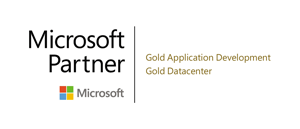Navigating Industry-Specific Challenges in IT Infrastructure Monitoring and Automation
In navigating the intricate landscape of IT infrastructure, NiCE IT Management Solutions’ whitepaper delves deep, unraveling the historical tapestry shaping the contemporary technological terrain. It dissects industry-specific challenges, offers tailored insights into crafting monitoring and automation solutions, and spotlights key players’ pivotal roles. Real-world applications showcase how these technologies drive operational excellence, emphasizing the necessity of skillful guidance through monitoring and automation in today’s business environments. This effort signifies a powerful alliance between Microsoft’s foundational tools and NiCE IT Management Solutions’ cutting-edge solutions. As businesses increasingly rely on technology, the presented insights aim to empower organizations, recognizing the paramount importance of effective monitoring and automation tools in the ever-evolving technological landscape. To sum up, this work embarks on a comprehensive exploration:
- Unraveling the historical tapestry
- Dissecting industry-specific challenges
- Spotlighting key players
- Showcasing real-world applications
- Elucidating the strategic benefits of adept navigation
The fast-paced evolution of technology, coupled with the intricacies of modern IT landscapes, necessitates a strategic understanding of the tools and methodologies that underscore infrastructure monitoring and automation. The introductory section sets the stage for an in-depth exploration, recognizing the pivotal role that effective monitoring and automation play in navigating the complexities of contemporary business environments.
Unveiling the Historical Tapestry of IT Infrastructure Monitoring and Automation
Embarking on the journey unveils a captivating evolution shaped by the relentless progress of technology. This section is talking about the symbiotic relationship between industry trends and technological development, dissecting key moments where the evolution aligned with specific industry requirements.
- In its nascent stages, organizations grappled with overseeing expanding technological infrastructures, relying on rudimentary and manual tools for basic network monitoring.
- The paradigm shifted with the introduction of automated solutions, marking a crucial milestone as businesses transitioned from reactive to proactive monitoring.
- This transformative era witnessed the integration of artificial intelligence (AI), bringing forth intelligent and adaptable monitoring systems capable of learning from patterns, predicting issues, and dynamically responding to changing conditions.
As technology advanced, industries played a pivotal role in shaping the trajectory, with the digital era and subsequent waves of transformation presenting unique challenges. Sectors like healthcare and finance necessitated specialized monitoring solutions tailored to virtualized environments, cloud platforms, and stringent regulatory frameworks.
Technological Advancements

The historical development is intricately woven with technological advancements.
- In the early stages, technology focused on automating routine tasks, reducing manual intervention, and establishing a more streamlined operational framework.
- The advent of AI marked a watershed moment, bringing unprecedented sophistication and enabling systems to operate intelligently and autonomously.
- Machine learning algorithms empower monitoring tools to adapt to changing conditions, identify anomalies, and provide insights beyond traditional approaches.
This technological leap increased accuracy and speed, paving the way for a more dynamic and responsive IT ecosystem.
Industry Trends and Development

The evolution is linked to dynamic trends and developments within various industries. For instance, the onset of the digital era and subsequent transformation waves necessitated monitoring solutions tailored to virtualized environments and cloud platforms.
The healthcare industry, for instance, witnessed a surge in the need for real-time monitoring solutions to ensure the availability and performance of critical applications. The financial sector grappled with securing vast volumes of sensitive data, prompting advancements in security-focused monitoring tools.
By unraveling these industry-specific dynamics, organizations can gain insights into the driving forces behind the evolution of infrastructure monitoring and automation. This historical context sets the stage for understanding how industries have been instrumental in shaping the current landscape of IT infrastructure management.
Adoption Trends

Examining historical adoption trends provides a comprehensive view of how organizations embraced these technologies.
- The adoption trends reflect not only the increasing recognition of the importance of proactive IT management but also the strategic choices made by organizations to address their unique challenges.
- During the transition to cloud-based infrastructures, organizations faced the need for monitoring solutions compatible with dynamic environments.
- The adoption of cloud-native monitoring tools became a prevalent trend as organizations sought to ensure the performance, availability, and security of applications in cloud environments.
By understanding how organizations navigated through different phases of adoption, the broader trends in infrastructure monitoring and automation come into focus. This historical perspective provides valuable insights into the strategic decisions made by organizations to enhance their IT capabilities and adapt to the evolving demands of the digital age.
Industry-Specific Challenges in IT Infrastructure Monitoring and Automation
Regulatory Compliance

In the landscape of infrastructure monitoring and automation, regulatory compliance stands out as a paramount challenge across diverse industries. Regulatory frameworks dictate stringent standards that organizations must adhere to, imposing a complex layer of requirements on IT operations.
- Ensuring monitoring and automation processes align seamlessly with regulatory standards is crucial.
- For instance, in the healthcare sector governed by strict regulations like the Health Insurance Portability and Accountability Act (HIPAA), robust monitoring solutions are required for patient data confidentiality, integrity, and availability.
- Achieving compliance necessitates real-time monitoring and automated responses to potential breaches or vulnerabilities.
This challenge becomes a focal point, emphasizing the need to expand the scope of enterprise application monitoring and automation while ensuring compliance with regulatory frameworks.
Data Sensitivity

The challenge of handling sensitive data looms large in industries where the confidentiality and integrity of information are paramount.
- In the financial sector, large volumes of sensitive financial information processing require monitoring solutions that provide comprehensive insights without compromising data security.
- The webinar by NiCE and Kelverion, titled ‘Microsoft System Center | Infrastructure Monitoring and Automation in Action,‘ focuses on closed-loop event management, emphasizing automated diagnostics and remediation for protection against unauthorized access and data breaches.
Understanding how different industries address the delicate balance between data sensitivity and the imperative for robust monitoring and automation solutions is crucial for developing effective strategies.
Scalability Issues

Scalability emerges as a substantial challenge, especially in industries experiencing rapid growth and expansion.
- Industries like e-commerce or online services face the challenge of ensuring that monitoring systems can scale horizontally to accommodate growing user bases and increasing transaction volumes.
- Automation plays a pivotal role in addressing scalability issues by automating the provisioning of resources, optimizing performance, and ensuring that the monitoring infrastructure evolves alongside the organization’s growth.
The exploration of scalability challenges offers actionable insights for organizations aiming to enhance their monitoring and automation capabilities in the face of expanding operational landscapes.
Technology Fragmentation

The modern technological ecosystem is characterized by diversity and fragmentation, with industries adopting a wide array of technologies and infrastructures.
- In manufacturing, where operational technology (OT) and information technology (IT) systems coexist, the challenge lies in integrating monitoring solutions seamlessly across these disparate domains.
- Addressing technology fragmentation involves deploying adaptive monitoring solutions that can bridge the gap between different technologies, providing a unified view of the entire infrastructure.
- Automation must navigate through diverse technology stacks, ensuring that events and incidents are managed cohesively.
This challenge aligns with the objective of automating diagnostics and remediation within diverse technological landscapes, offering a roadmap for organizations addressing similar challenges.
Key Players in the IT Infrastructure Monitoring and Automation Landscape
Established Leaders

The landscape of monitoring and automation is significantly influenced by established leaders who have not only pioneered innovative solutions but have also demonstrated a substantial market presence. Companies such as IBM, Microsoft, and Cisco have been instrumental in shaping the industry with their robust monitoring and automation offerings.
- Microsoft stands out with its comprehensive System Center suite, including System Center Operations Manager (SCOM) and System Center Orchestrator (SCORCH), foundational components for organizations seeking effective infrastructure monitoring and automation capabilities.
- Microsoft’s SCOM provides end-to-end monitoring of applications and infrastructure, enabling deep insights into performance and health.
Understanding the role of established leaders like Microsoft is crucial, setting the stage for organizations to leverage proven solutions while expanding the scope of their enterprise application monitoring.
Emerging Innovators

In tandem with established leaders, emerging innovators play a pivotal role in disrupting the traditional monitoring and automation landscape. Startups and newer entrants bring fresh perspectives and novel approaches to address evolving challenges. Companies like Datadog, Splunk, and Dynatrace exemplify the innovative spirit driving the industry forward.
Datadog, for instance, has gained prominence for its cloud monitoring and analytics platform, providing unified visibility into the performance of applications, servers, and infrastructure.
Recognizing the contributions of emerging innovators is essential as organizations explore diversified solutions to meet the specific demands of their IT environments.
Strategic Partnerships

Collaborations and partnerships within the monitoring and automation industry are indicative of a dynamic ecosystem where collective efforts contribute to the development and integration of advanced solutions. Strategic alliances between hardware providers, software developers, and cloud service providers foster a collaborative environment.
Partnerships between Cisco and major cloud service providers have resulted in integrated solutions with cloud-based monitoring capabilities.
Insights into strategic partnerships guide organizations in selecting monitoring and automation solutions that align with their broader IT strategies.
Microsoft System Center Operations Manager (SCOM) and Orchestrator (SCORCH) Integration
In the ever-evolving landscape of enterprise IT, the integration of Microsoft’s System Center Operations Manager (SCOM) and System Center Orchestrator (SCORCH) stands out as a transformative force, fundamentally reshaping the terrain of infrastructure monitoring and automation.
Evolution of SCOM
Initially introduced as Microsoft Operations Manager (MOM) in the early 2000s, SCOM has undergone a remarkable journey of refinement and expansion. Originally focused on server applications, it has matured into a holistic monitoring solution within Microsoft’s System Center suite.
The evolution positions SCOM as a cornerstone for organizations aiming to proactively monitor and manage the health of their enterprise applications.
NiCE, a prominent player in SCOM-related solutions, contributes to this landscape, leveraging expertise to enhance the SCOM experience. NiCE’s solutions complement the SCOM integration, providing additional layers of insight and customization. This effort signifies a powerful alliance between Microsoft’s foundational tools and NiCE’s specialized enhancements, empowering organizations with unparalleled agility and efficiency in their IT operations.
SCORCH: Orchestrating Automation Excellence
In synergy with SCOM, System Center Orchestrator (SCORCH) emerges as a critical player in automating workflows and orchestrating complex processes. Formerly recognized as Opalis Orchestrator, SCORCH empowers organizations to create, deploy, and manage automated workflows seamlessly.
Its significance lies in its ability to orchestrate processes across different systems and platforms, aligning seamlessly with the emphasis on closed-loop event management and the automation of diagnostics and remediation of infrastructure issues.
Integration Unleashed
The convergence of SCOM and SCORCH represents more than just an integration of tools; it symbolizes a paradigm shift in how organizations approach event management and issue resolution.
This unified solution introduces a closed-loop event management approach, where issues identified through monitoring trigger automated workflows for diagnostic and remediation actions.
Organizations embracing this integrated approach position themselves at the forefront of navigating the challenges inherent in the modern IT landscape with unparalleled agility and efficiency.
Unveiling the Dynamics of IT Infrastructure Monitoring and Automation in Varied Use Cases
Healthcare Industry

In the complex landscape of the healthcare industry, where patient well-being and data security are paramount, infrastructure monitoring and automation play pivotal roles. Compliance with stringent regulations, such as the Health Insurance Portability and Accountability Act (HIPAA), necessitates continuous monitoring.
- Automation assists in optimizing critical processes, ensuring timely responses to anomalies, and maintaining the integrity and security of patient data.
- Implementing a comprehensive monitoring solution integrated with electronic health record (EHR) systems, enables real-time tracking of patient data access. This ensures compliance and expedited issue resolution.
Finance and Banking

The finance and banking sector face unique challenges, including stringent security requirements and the perpetual threat of fraud. Monitoring solutions have become instrumental in detecting unusual patterns and potential security breaches.
- Automation streamlines financial processes, from transaction monitoring to regulatory reporting, ensuring compliance with industry standards and enhancing operational efficiency.
- In response to evolving cybersecurity threats, implementing a monitoring system employing machine learning algorithms helps to identify anomalous transactions. Automated responses, such as blocking transactions and notifying security teams, significantly bolstered fraud detection capabilities.
Explore the real-world application of the NiCE Active 365 Management Pack in optimizing financial operations through effective monitoring in this insightful case study.
Manufacturing Sector

In the dynamic landscape of manufacturing, scalability and efficiency are critical factors. Monitoring systems tailored to the manufacturing environment address challenges related to scalability, providing insights into the performance of machinery, supply chain processes, and overall production efficiency.
- Automation plays a key role in optimizing manufacturing workflows, from inventory management to quality control.
- An international manufacturing conglomerate, faced with the challenge of scaling its monitoring infrastructure across diverse production facilities, implemented a solution utilizing edge computing for real-time monitoring. Automation scripts were integrated to proactively address issues, resulting in enhanced scalability without compromising efficiency.
Dive into the real-world application of the NiCE Active 365 Management Pack in optimizing manufacturing operations through effective monitoring in this insightful case study.
Technology and IT Services

The technology and IT services industry grapples with technology fragmentation, often managing diverse tech stacks and infrastructures. Monitoring and automation are deployed to streamline operations, optimize resource utilization, and ensure the seamless functioning of IT services.
A global IT services provider utilized automation to integrate monitoring tools with their service desk, allowing for automated incident resolution, reducing response times, and improving overall service delivery.
The use of monitoring and automation in this context exemplifies how technology-driven industries navigate challenges and foster operational excellence.
Navigating Benefits of IT Infrastructure Monitoring and Automation
Operational Efficiency

In the intricate ballet of organizational processes, achieving operational efficiency requires harmonious coordination. Monitoring and automation form a dynamic duo, orchestrating a symphony of streamlined operations.
- At the heart of this synergy lies the real-time insights garnered through sophisticated monitoring tools.
- Monitoring becomes the vigilant observer, anticipating potential bottlenecks and performance issues.
- Predictive prowess transforms into proactive adjustments, ensuring that the rhythm of operations remains uninterrupted.
- Automation, the choreographer of routine tasks, steps in seamlessly to execute predefined workflows with precision and speed.
This exploration transcends the realm of mere efficiency; it’s an immersion into a paradigm where every operational note resonates synergistically to compose a symphony of success.
Cost Savings

Embarking on a financial journey, the fusion of monitoring and automation becomes the compass for cost savings. Uncover the art of resource optimization through vigilant monitoring, where the landscape of organizational assets is surveyed with meticulous precision.
- Monitoring unveils underutilized resources, allowing organizations to strategically allocate budgets for maximum impact.
- Automation, the conductor of efficiency, takes center stage by minimizing manual interventions.
- Routine and repetitive tasks are automated, resulting in a tangible reduction of operational costs.
This exploration portrays a canvas where financial resources dance in harmony with strategic objectives, creating a masterpiece of fiscal prudence and operational excellence.
Enhanced Security

Witness the dynamic synergy between monitoring and automation as detected threats prompt automated actions. Automation, functioning as a swift executor, implements predefined security protocols with precision, neutralizing threats instantly.
- In organizational security, the collaboration between monitoring and automation stands as a bulwark against digital threats.
- Monitoring tools, acting as vigilant sentinels, meticulously scan the digital landscape in real-time, identifying anomalies and potential threats with unwavering precision.
- Exploring specific use cases help illustrate the seamless integration of monitoring and automation in securing digital infrastructures; presented herein is a notable use case featuring a leading U.S. Investment Bank, demonstrating the effective integration of NiCE IT Management Solutions’ advanced management pack solutions within their digital infrastructure.
- Collaborative effort not only detects but also neutralizes threats promptly, ensuring the integrity and resilience of organizational security frameworks.
This narrative unfolds not just as a tale of protection but as a testament to the proactive measures undertaken by monitoring and automation to defend against evolving digital threats.
Adaptability to Change

In the dynamic landscape of technological evolution, organizations that thrive are the ones embracing change with strategic agility. The exploration of adaptability within monitoring and automation showcases a proactive approach to change management.
- Discover practical examples illustrating how organizations, with robust monitoring strategies, adeptly navigate technological and industry changes. Explore the role of automation in facilitating this adaptability by providing agile solutions to evolving challenges.
- Witness organizations not merely reacting but proactively shaping their destiny amidst the ever-evolving technological landscape.
This is not just adaptability; it’s a narrative of organizations sculpting their destiny, leveraging the power of proactive monitoring and agile automation to navigate and thrive in the face of change.
NiCE Solutions: Navigating Monitoring Challenges with Precision
In addressing the complexities of infrastructure monitoring and automation, NiCE provides targeted technical solutions tailored for industry-specific needs:
- Seamless Integration with Microsoft System Center: NiCE excels in integrating seamlessly with Microsoft System Center, offering a unified monitoring environment with enhanced capabilities for diverse industries.
- Adaptability Across Tech Ecosystems: NiCE’s solutions are engineered for adaptability, providing flexibility across diverse technological ecosystems, ensuring a fit-for-purpose approach for every organization.
- Plug-and-Play Efficiency: NiCE prioritizes simplicity with plug-and-play implementation, reducing deployment complexities and accelerating the realization of monitoring benefits for improved operational efficiency.
- Tailored Monitoring Processes: NiCE stands out by customizing monitoring processes to specific organizational requirements, aligning its solutions precisely with the unique challenges faced by clients.
- Technical Insightful Support: NiCE complements its solutions with technical support that goes beyond the ordinary, offering insights during pre-sales engagements to empower organizations with informed decisions about their monitoring strategy.
As organizations grapple with infrastructure monitoring challenges, NiCE’s technical solutions pave the way for a proactive and efficient approach, ensuring resilience in the ever-evolving digital landscapes.
Conclusion
Navigating the intricate landscape of infrastructure monitoring and automation reveals a narrative that surpasses mere technological evolution. At this crossroads of history, challenges, innovations, and real-world applications, the synergy of monitoring and automation emerges as a strategic imperative.
The historical journey, progressing from rudimentary tools to the convergence of AI-driven automation, signifies an unwavering commitment to enhancing IT infrastructure efficiency. Industry trends, adoption dynamics, and sector-specific challenges collectively shape an environment that demands adaptive solutions. Key challenges include:
- Regulatory compliance
- Data security
- Scalability
- Technology fragmentation
These challenges necessitate nuanced monitoring and automation strategies.
Key industry players, whether established or emerging, contribute to this dynamic landscape. Collaborative partnerships and integrations, exemplified by Microsoft’s SCOM and SCORCH convergence, underscore collective efforts in shaping advanced solutions.
Real-world applications in healthcare, finance, manufacturing, and IT services illustrate the orchestration of operational efficiency, cost savings, enhanced security, and adaptability to change. It is a symphony where monitoring anticipates and adapts, ensuring seamless operations and organizational success.
In this context, NiCE’s monitoring process stands out as a virtuoso performance. Seamlessly integrating with Microsoft System Center, it epitomizes adaptability, precision, and flexibility. The out-of-the-box setup, clear customer understanding, and exceptional pre-sales support exemplify the intricacies demanded by modern monitoring environments. As organizations chart their future, the nexus of monitoring and automation emerges as a beacon for operational excellence. Beyond issue detection, it is about proactively shaping a resilient and agile future. NiCE’s monitoring process compatible with the complexity of IT environments becomes visible. In the relentless march of technology, adept navigation of monitoring and automation ceases to be a strategic choice; it is the foundational bedrock for organizational triumph in the ever-evolving digital age.
References
This comprehensive whitepaper by NiCE IT Management Solutions aims to be an indispensable resource for organizations navigating the intricate landscape of infrastructure monitoring and automation. From unraveling the historical tapestry to addressing industry-specific challenges, it serves as a beacon, illuminating key dynamics, offering strategic insights, and showcasing real-world applications. As businesses increasingly rely on technology for operational triumph, this whitepaper provides a roadmap for understanding, implementing, and optimizing monitoring and automation strategies, fostering efficiency, adaptability, and success in the ever-evolving digital age.
NiCE Use Cases for Advanced Monitoring on Microsoft SCOM
- NiCE Active 365 Management Pack Use Case | Multinational Bank
- NiCE Active 365 Management Pack Use Case | Financial Technology Provider
- NiCE Active 365 Management Pack at US Use Case | Investment Bank
- NiCE Oracle Management Pack Use Case | Oil and Gas Company
- NiCE VMware Management Pack Customer Use Case | Regional Federal Power Marketing Agency
Webinars and Recordings
Contact us for advanced IT Infrastructure Monitoring & Automation
We are looking forward to your inquiry.

NiCE IT Management Solutions is a long-term Microsoft Business Partner with Gold status for Application Development and Datacenter.